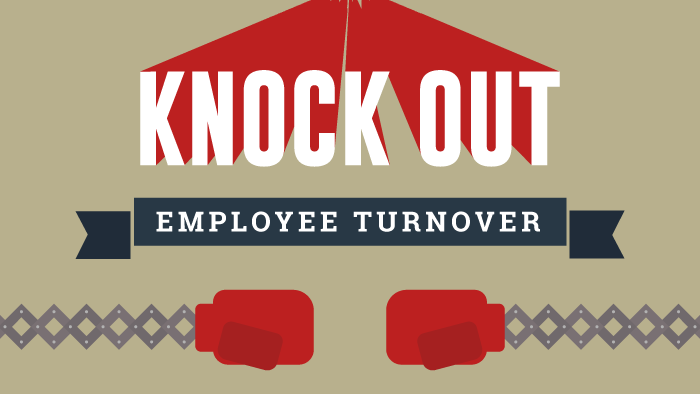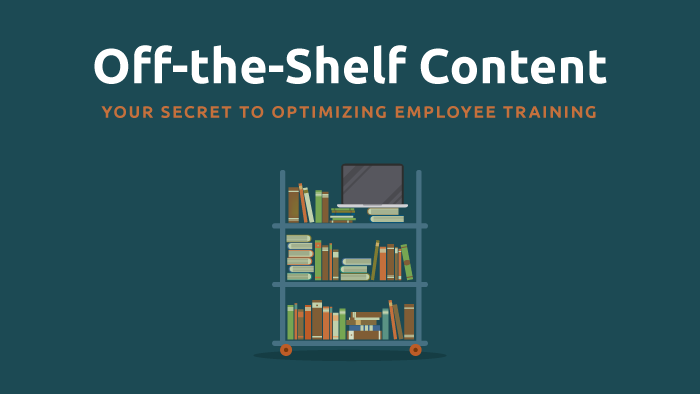By Josip Mlinaric
Content creation and content marketing… they’re about lead generation and sales enablement, right? They absolutely are, and the number of organizations using content marketing is increasing rapidly.
Today it’s estimated that more than half of all organizations — that includes everyone from tiny family-run businesses to huge global corporations — are using content marketing to drive website traffic and boost customer engagement.
But what many fail to realize is that the benefits of content extend far beyond sales.
Content is actually a pretty powerful facilitator of HR processes. While marketers use content for attracting and converting website visitors, a few forward-thinking HR departments are applying this directly to the human resources setting, using content to attract new employees and ensure existing staff are engaged and happy.
Content is being used to reduce high employee turnover and retain top talent, but how can you create a strategic HR marketing strategy and, more importantly, what benefits does it actually bring?
Let’s take a look….
What is Content?
To answer these questions, we first need to look at what content is.
It’s articles. It’s webinars. It’s ebooks. It’s infographics. It’s videos. It’s images. We all know this. What we don’t all know, however, is that content is actually a whole lot more.
By understanding what content is, its impact, and knowing some best practices, HR managers can create a strategic plan for communicating not only with their current workforce, but also with potential future employees.
Content is essentially anything that a company produces, so we can add job descriptions, emails, training manuals, and a whole range of other mediums into the mix.
Ultimately, content is communication, and when we approach it from this communication perspective, it becomes much easier to see where content and HR both come together and fit into one another.
Linking Content Marketing with Human Resources
Whether it’s communicating with prospective talent, with the existing workforce, or with managers and stakeholders, it’s clear that communication is a key aspect of any successful HR strategy. And yet communication is also cited as one of the top challenges affecting HR professionals today.
A study by technology company Speakap attributes this to the shifting workforce, with the ever-increasing percentage of millennials in employment demanding improved communications as a result of having grown up in a world of texts, emails, and instantaneous responses.
By understanding what content is, its impact, and knowing some best practices, HR managers can create a strategic plan for communicating not only with their current workforce, but also with potential future employees.
Benefits of HR-Influenced Content
Whether you’re looking to improve your recruitment strategy or keep your talented people engaged and happy, content could be the tool you need to achieve your organization’s goals.
And while there are a large number of benefits that producing and publishing HR-influenced content can bring, there are five specific advantages that could be experienced by businesses in any industry:
1. Attract the Best Hires
The “best hire”… that’s a phrase that means something very different today than it did 10, or maybe even just five years ago.
Previously, the “best hire” was the candidate who exhibited the necessary skill and talent to conduct the duties of the role with excellence. Today, however, formal qualifications hold less weight.
There’s a new technique.
It’s called “recruit for culture, train for skill,” and it’s based on the idea that we can train our employees to be good at their jobs, but we can’t adapt their personalities and characteristics to fit in with the workplace environment.
The “best hire” is now more about cultural fit.
And as you can probably guess, cultural fit is a lot harder to figure out from a resume than degrees and certifications. That’s exactly why cultural fit should be addressed right at the beginning of the recruitment process… which content can help with.
By publishing content that not only engages with relevant talent, but also provides a glimpse into life at the organization, prospective applicants are clear from the start on whether or not the company’s ways of working match their own values; a pretty important factor when you consider that three quarters of people have quit because of poor cultural fit.
2. Reduce Turnover
High rates of turnover are proving to be one of the biggest obstacles standing in the way of business success today, especially at a time when many organizations all around the globe, across a huge number of industries, are experiencing a talent shortage.
Today, it’s estimated that the average worker spends just 4.2 years in any given role, suggesting that businesses could be doing more to retain their staff.
But the truth is that the bulk of the work must be done prior to recruitment; it is much more effective to prepare a potential employee for the environment, than to try and undo what may have been a bad hire.
And this is where content comes into play. The effects of content are not short-lived. It can be used as a long-term HR marketing strategy to nurture and engage with prospective and current talent, the whole way through their career journey.
By creating and sharing a wide range of content, offering various insights, and answering common questions through the art of storytelling, HR teams can ensure that anyone they bring on board has a clear view of what to expect.
Through content, new workers should be 100% sure that this is a company they want to work for, and they should have the knowledge to come in and really hit the ground running.
For more information on how to fight employee turnover, check out our infographic to help find solutions to engaging employees.
3. Save Money
If good content holds the power to increase the quality of the hire and reduce staff turnover, as we’ve discussed, it naturally holds the potential to minimize costs and keep HR budgets in check. How?
By cutting the average cost per hire.
Although there are many different ways to calculate cost per hire, The Society for Human Resources Management recommends a calculation of: (Total External Costs + Total Internal Costs) / Total Number of Hires.
In the U.S., Deloitte suggests an average cost per hire of $4,000, while the SHRM Human Capital Benchmarking Report came up with a remarkably similar figure of $4,129.
Ultimately, when you take into account base salary, benefits, training costs, and any costs associated with workplace integration, it’s estimated that each “bad hire” costs the average business $14,900. And as we’ve looked at, the use of content to not only guide candidates logically down the recruitment funnel, but also to provide insights into workplace culture can significantly reduce the chance of making a “bad hire.”
Saving this kind of money is certainly a beneficial byproduct of an HR marketing strategy.
4. Show Off the Bigger Picture
So far, we’ve looked at the benefits that directly relate to new hires, but could content also be used to improve the existing employee experience?
Improving the employee experience is important at a time when 30% feel undervalued at work.
Absolutely. There are many ways that HR-influenced content can be used to engage with the current workforce, addressing concerns and motivating staff to perform to the best of their ability, while enjoying their duties and experiencing great workplace satisfaction.
And one of these ways is to use content as a sharing and collaboration tool, helping employees to visualize how their own individual efforts combine to impact the core business and drive the organization toward success.
How can this be done?
Project updates are a good place to start. And the key to getting this spot on is effective communication and collaboration between all departments, and all teams. Data gathering from all individual stages of a project — for example, account management, project management, design, development, manufacture, testing, user experience, and so on — can be used to create overviews, shared with staff, that highlight how their own efforts have contributed towards a finished project.
Improving the employee experience is important at a time when 30% feel undervalued at work.
5. Boost Trust
Did you know that 70% of employees don’t have trust in HR?
The trust problem appears to be widespread, and while there are many potential reasons for this, one of the biggest probable causes is a lack of transparency.
Transparency in the workplace is an issue that’s highly debated, with some claiming that transparency can generate an improved employee experience and others believing that “airing dirty laundry” can create serious consequences for organizations.
But there’s certainly a middle ground that can be explored through HR-generated content that provides knowledge-sharing across departments.
Perhaps one of the most notable issues that exists in the HR world today is a lack of integration with other organizational departments. In many businesses, organizational structure dictates that human resources is very much a standalone entity, which can result in a disconnect between HR and production, administration, and other areas of the business.
To fill this void, boost transparency, and rebuild the trust, HR departments could consider creating their own content — departmental newsletters for example — or working one-on-one with employees to generate role-specific insights and stories.
Creating an Effective HR Marketing Strategy
So we can clearly see that there are multiple benefits to generating an HR content marketing strategy, but the question still remains: what steps are there to creating an effective strategy that really works?
While there’s no right or wrong answer, and different approaches will work for different HR departments, there are a few standard steps that can be taken to get the ball rolling and start building a strategy:
Define Your Brand Voice
When creating any sort of content strategy, delivering a consistent message is key. Therefore, it’s essential that your first step is defining your brand voice and applying this voice to all future content.
Get to Grips with the Recruitment Funnel
To boost the recruitment strategy, understanding how to create content for each stage of the funnel — awareness, consideration, decision — is key to engaging with the right people, at the right time.
Collaborate
The truth is that this isn’t a task for HR alone. As well as collaborating with marketing, who have experience in content creation, get employees themselves involved with peer-generated stories.
Content Works for More Than Traditional Marketing
Content has long been used to market a business, a product, or a service to the right audiences, but what has typically been overlooked is the power of content to go above and beyond just this traditional meaning of marketing.
How about marketing a company to potential employees? Or to existing employees?
How about marketing an HR department to other areas of the business to instill cross-company trust?
Or marketing the opportunities you provide for learning and development, to help employees improve their performance through self-directed learning?
There’s more to content than we think, and it’s time we started using it to its full potential.
To see how content can play a vital role in more than just your marketing strategy, check out our ebook about using off-the-shelf content in employee training.
Josip Mlinaric is an Email Marketing and Outreach Specialist at Point Visible, a marketing agency providing custom outreach and link-building service. He likes to say he has a simple and calm mindset in his approach towards life in general and likes to relax with experimenting in the kitchen or just chilling listening to music.


